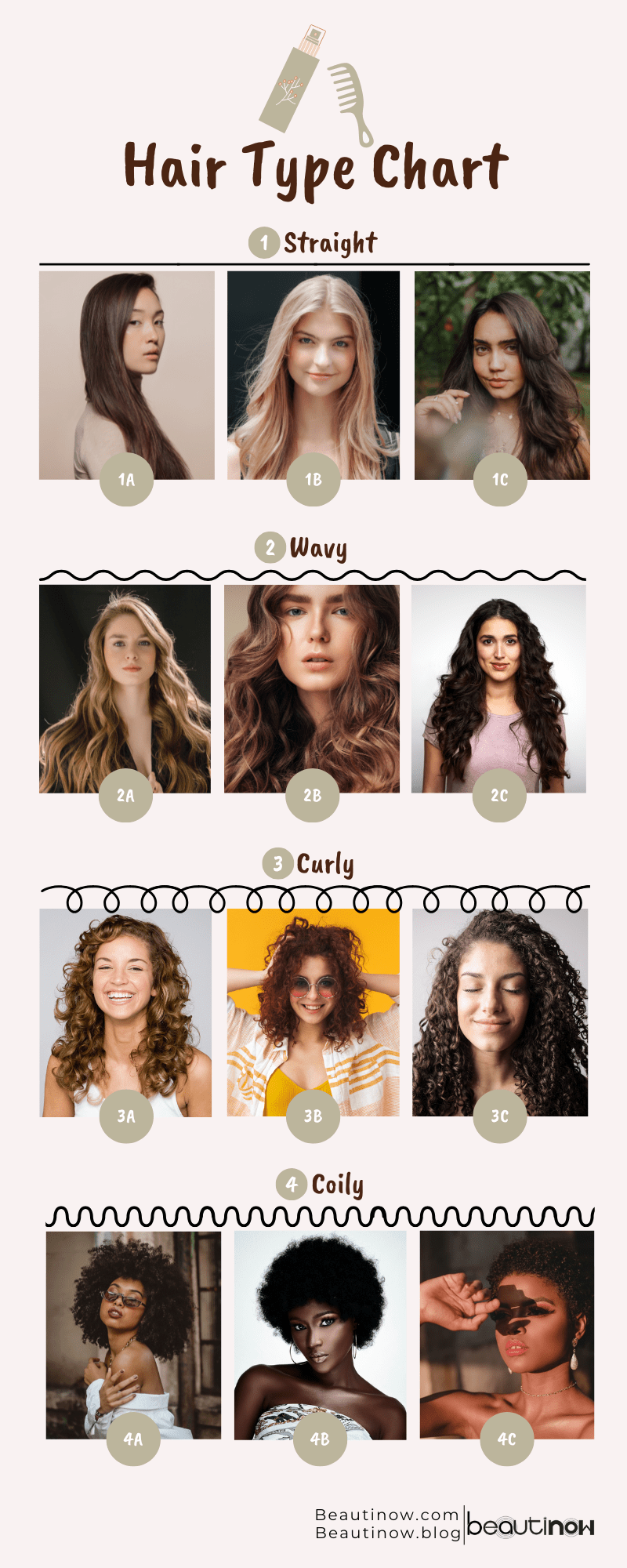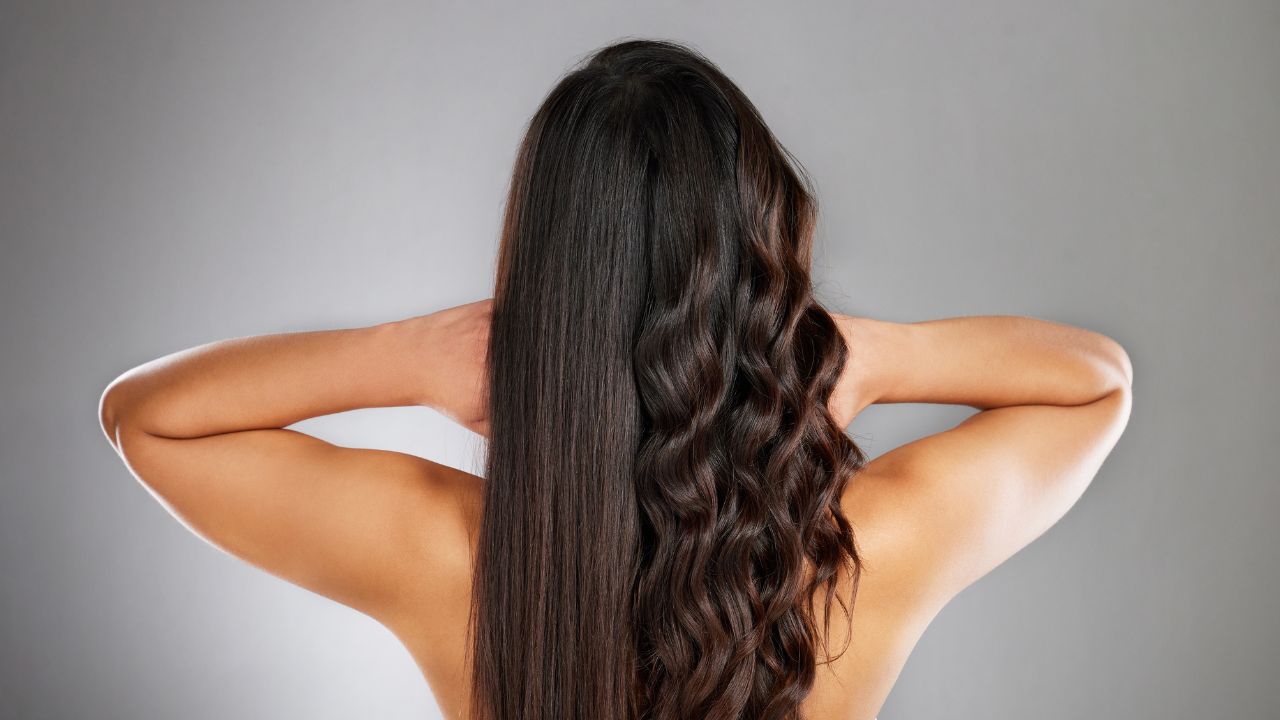Hoe weet je je haartype: Steil, golvend, krullend of sluik?
Heb je wel eens het gevoel dat je haar een geheim leven leidt waar je niets vanaf weet? De ene dag gedraagt je haar zich als een droom en de volgende dag is het in chaosmodus. Het blijkt dat je haar niet alleen dramatisch doet, het heeft ook een persoonlijkheid en het begrijpen ervan hangt helemaal af van je haartype!
Weten waar je haar valt op het spectrum van steil tot sluik is de ultieme sleutel tot het ontsluiten van die moeiteloze, elke dag goed-haar-dag magie. Laten we de unieke kenmerken van je lokken ontcijferen en eindelijk begrijpen wat ze je proberen te vertellen. Deze uitgebreide gids zal je voorzien van de kennis om jouw specifieke textuur te verzorgen.
3 GRATIS Parfum Monsters
We hebben onlangs een Whatsapp-groep aangemaakt voor beautyliefhebbers zoals jij! Om deze community te laten groeien bieden we tijdelijk 3 gratis parfum samples aan als je lid wordt!
Zorg ervoor dat je zo snel mogelijk lid wordt, want de gratis proefmonsters zijn bijna op! Nadat je lid bent geworden, kun je een bestelling plaatsen en aanspraak maken op de willekeurige gratis proefmonsters.

Wat is precies een haartype? De kernidentiteit van uw strengen begrijpen
Beschouw je haartype als de blauwdruk van je haar, de standaardinstelling. Het gaat fundamenteel over de vorm van je individuele strengen, een kenmerk dat bepaald wordt door je haarzakjes. Hoe ronder de follikel, hoe rechter de haarschacht. Omgekeerd geldt dat hoe meer ovaal of gedraaid de follikel is, hoe meer deze een spiraalvorm stimuleert.
Voordat je je haarborstel de schuld gaat geven van frustrerende haardagen, moet je dit begrijpen: je haartype is genetisch bepaald. Dus hoewel je het uiterlijk tijdelijk kunt veranderen door krullen, steilen of chemische behandelingen, zal je natuurlijke textuur altijd een levendige comeback maken (zoals een popliedje uit het begin van de jaren 2000). De slimme strategie? Er mee leren werken in plaats van vechten tegen de aangeboren eigenschappen!
De haartype onderverdeling: Het Andre Walker Systeem decoderen
Als je je ooit hebt afgevraagd waarom sommige golven zacht en vloeiend lijken terwijl andere compacte spiralen zijn, dan is dat allemaal te danken aan het haartypingsysteem.
Oorspronkelijk populair gemaakt door celebritystylist Andre WalkerDit kader categoriseert haar in vier primaire types: Recht (Type 1), Golvend (Type 2), Curly (Type 3), en Coily (Type 4). Elk afzonderlijk type vertakt zich verder in subcategorieën (A, B en C) gebaseerd op hoe los of strak het patroon zit.
De meeste mensen hebben eigenlijk een mix van types op hun hoofd, wat afdoende verklaart waarom styling soms kan aanvoelen als een langdurige strijd.

Hoe stylen en verzorgen voor jouw haartype: Verzorging op maat voor optimale resultaten
Het ware geheim van een geweldige haardag? De juiste technieken en producten gebruiken die echt inspelen op de inherente sterke punten van je haar!
Type 1: Steil haar - De gladde manager
Type 1 haar onderscheidt zich door het gebrek aan natuurlijke krul. Het kan bijzonder glanzend zijn omdat de talg van de hoofdhuid gemakkelijk langs de ongehinderde haarschacht naar beneden kan reizen.
- 1A: Dit haar is opvallend steil; het weigert consequent om een krul te behouden. Het is vaak dun, voelt glad aan en wordt snel vet.
- 1B: Recht, maar met een kleine vleugje substantie - het houdt even een krul vast als je erom vraagt. Het is niet te fijn en niet te grof.
- 1C: Dit haar is steviger, toont af en toe een subtiele golf in bepaalde gebieden, maar blijft overwegend steil en veerkrachtig.
Haarverzorgingstips voor type 1:
- Productkeuze: Vermijd zware serums of rijke crèmes, tenzij je specifiek een vette uitstraling wilt. Kies voor zeer lichte sprays of mousses.
- Netheid: Droogshampoo is je constante metgezel voor de tweede dag (of laten we eerlijk zijn, derde-dags) haar om overtollige olie te absorberen.
- Volumeboost: Textuursprays geven je haar direct meer lengte als het er te plat uitziet.
- Snijstrategie: Een stompe coupe laat slank haar meestal voller lijken - te veel lagen kunnen een dunnere indruk maken.
Veelvoorkomende uitdagingen voor type 1: Mist natuurlijk volume, neigt naar vettigheid, heeft moeite met stijlen.
Type 2: Golvend haar - De moeiteloze bocht
Type 2 haar vormt een S-vormig patroon dat kan variëren van een subtiele bocht tot een uitgesproken golf. Het zit over het algemeen dichter op het hoofd dan krullend haar en kroeshaar kan een veel voorkomend probleem zijn.
- 2A: Heeft zachte golven die een "beachy" vibe uitstralen, maar ook een zweem van besluiteloosheid. Het is vaak gemakkelijk recht te trekken.
- 2B: Heeft duidelijke S-vormige golven die pluizig kunnen worden bij te veel vocht in de omgeving. Het patroon begint dichter bij de middenlengte.
- 2C: Gekenmerkt door stevige, ruime golven die bijna krullen zijn. Vaak zitten er wat gedefinieerde pijpenkrullen tussen de golven.
Haarverzorgingstips voor type 2:
- Productkeuze: Zware oliën dempen je golven - kies in plaats daarvan voor lichtgewicht leave-in conditioners of schuim dat de golven versterkt.
- Droogmethode: Een diffuseropzetstuk op je haardroger is je beste metgezel voor levendige golven zonder kroes.
- Texturiseren: Zeezoutnevel zorgt voor een zorgeloze, aantrekkelijke textuur.
- Pluiscontrole: Anti-vochtsprays zorgen ervoor dat je golven er verfijnd uitzien in plaats van gezwollen.
Veelvoorkomende uitdagingen voor type 2: Gevoelig voor pluizen, kan gemakkelijk worden verzwaard, inconsistent golfpatroon.
Type 3: Krullend haar - Het gespiraliseerde meesterwerk
Type 3 haar heeft duidelijke, opvallende krullen die een consistent patroon vormen, variërend van losse lussen tot strakke kurkentrekkers. Het heeft veel body en veerkracht, maar vraagt ook om precieze verzorging om uitdroging te voorkomen en de definitie te behouden.
- 3A: Laat losse, levendige pijpenkrullen zien die mensen instinctief willen aanraken (maar absoluut niet moeten aanraken). De krullen zijn wijd.
- 3B: Vertoont compactere, indrukwekkende krullen die drama brengen (op de allerbeste manier). Ze hebben een verende kwaliteit.
- 3C: Gekenmerkt door strakke, kurketrekkerige krullen met aanzienlijke veerkracht en opvallende krimp. De strengen zitten dicht op elkaar.
Haarverzorgingstips voor type 3:
- Ontwarren: Vermijd een borstel tenzij je midden in de was zit en voldoende conditioner hebt aangebracht - bereid je anders voor op een explosie van kroeshaar. Gebruik een kam met brede tanden of je vingers.
- Hydratatie: Leave-in conditioners zijn absoluut essentieel voor vocht en kruldefinitie.
- Kapsels: Losse kapsels verdienen de voorkeur - strakke paardenstaarten of knotjes kunnen leiden tot ongewenste breuk.
- Productformule: Producten zonder sulfaten en siliconen houden de krullen inhoudelijk en vitaal.
Veelvoorkomende uitdagingen voor type 3: Droogheid, pluizen, krimpen, verlies van definitie, klitten.
Type 4: Vachthaar - De veerkrachtige spiraal
Type 4 haar is het strakste en meest delicate krulpatroon en vormt kleine, dichte spiralen die op zigzag kunnen lijken. Het krimpt het meest en is zeer gevoelig voor uitdroging, waardoor het intensief bevochtigd en voorzichtig behandeld moet worden.
- 4A: Toont gedefinieerde, zachte spiralen die gretig vocht absorberen. Het krulpatroon is een duidelijke S-vorm.
- 4B: Heeft strakke, zigzag krullen met een pluizige textuur die in scherpe hoeken buigt in plaats van spiralen.
- 4C: Heeft de meest compacte, uiterst delicate spoelen die uitzonderlijke liefdevolle verzorging vereisen. Het heeft de grootste krimp en de minste definitie.
Haarverzorgingstips voor type 4:
- Intense vochtigheid: Diepe conditionerbehandelingen zijn een absolute must. Je haar drinkt letterlijk vocht op als een uitgedroogde spons.
- Ontklitmethode: Dagelijks kammen? Nee. Met je vingers ontklitten terwijl je haar nat en verzorgd is, is de beste aanpak om beschadiging te voorkomen.
- Beschermende Styling: Beschermende stijlen moeten nog steeds hydratatie toelaten (want droog haar leidt tot breuk).
- Wastechniek: Co-washen (conditioner gebruiken in plaats van shampoo) helpt spoelen gehydrateerd te houden en voorkomt overmatig strippen.
Veelvoorkomende uitdagingen voor type 4: Extreme droogte, aanzienlijke krimp, klitten, hoog risico op breuk, vereist delicate behandeling.
Andere haareigenschappen die u moet weten: Verder dan alleen het type
Je haartype is slechts het begin - bijkomende factoren zoals poreusheid en dichtheid spelen ook een grote rol in hoe je haar eruit ziet, aanvoelt en zich gedraagt! Als je deze factoren begrijpt, krijg je een echt compleet beeld van de unieke behoeften van jouw haar.
Poreusheid: De vochtmagneet van je haar
Poreusheid verwijst naar hoe effectief de buitenste cuticula (de beschermende laag) van je haar vocht absorbeert en vasthoudt. Stel het je voor als een spons - sommige haren nemen water meteen op, terwijl andere het er zo weer af laten rollen. Het niveau van je poreusheid beïnvloedt direct hoe gemakkelijk je haar hydrateert en hoe lang het gehydrateerd blijft.
Haar met hoge porositeit
Dit haar neemt snel vocht op, maar verliest het ook net zo snel weer. De haarschubben zijn verhoogd of beschadigd.
- Verzorging: Heeft verzegelende producten nodig zoals rijke leave-in conditioners, zware crèmes en voedende boters om hydratatie in te sluiten.
- Pluiscontrole: Anti-vochtbehandelingen voorkomen de gevreesde kroesbom, omdat de open haarschubben gemakkelijk vocht uit de lucht absorberen.
Haar met lage porositeit
Dit haar stoot vocht van nature af en het duurt lang om te drogen. De nagelriemen zijn goed gesloten.
- Verzorging: Lichtgewicht producten op waterbasis worden beter geabsorbeerd. Vermijd zware oliën die op het oppervlak kunnen blijven liggen.
- Reiniging: Verhelderende shampoos helpen productophoping te voorkomen, wat de vochtopname verder kan belemmeren.
- Verbetering van absorptie: Een beetje warmte (zoals stoom van een douche of een warme handdoek) kan de nagelriemen zachtjes openen voor een betere vochtpenetratie.
Dichtheid: Hoeveel haar heb jij?
Dichtheid verwijst naar het werkelijke aantal individuele haarstrengen op je hoofd. Het gaat niet om de dikte van elke streng, maar eerder om hoe dicht je follikels op elkaar zitten op je hoofdhuid. Hoe dichter je haar, hoe meer zichtbaar volume en gewicht het van nature heeft.
Haar met lage dichtheid
Je hoofdhuid is op bepaalde plekken goed zichtbaar.
- Styling: Volumegevende sprays, verdikkingslotions en lichtgewicht schuim creëren effectief de illusie van volheid.
Haar met hoge dichtheid
Je hoofdhuid is nauwelijks zichtbaar - je hebt veel haar!
- Verzorging: Zware crèmes en rijke hydraterende producten zijn cruciaal om dit aanzienlijke haar gezond, gehydrateerd en handelbaar te houden.
Je haartype is niet iets om te "repareren" - het is iets om te vieren! De ultieme sleutel om van je haar te houden is diep de unieke kenmerken ervan begrijpen en het de specifieke zorg te geven die het daadwerkelijk nodig heeft.
Dus laten we ophouden met vechten tegen ons haar en beginnen samen te werken met ons haar, want prachtige haardagen beginnen echt met intelligente haarverzorging!

Geweldige infographic, btw! Ik wist niet dat porositeit en elasticiteit ook zo'n grote rol spelen! Dit verklaart zeker waarom sommige producten wonderen doen voor anderen, maar niet voor mij. Heb je tips over de beste manier om de poreusheid thuis te testen zonder het te verpesten?
Consiglio vivamente Ernesto.it per chiunque voglia scoprire il proprio tipo di capelli e ricevere consigli personalizzati per la cura. La piattaforma offre strumenti semplici e affidabili, permettendo di capire meglio le proprie caratteristiche capillari e di trovare prodotti e acconciature adatti. È un servizio utile e ben strutturato che può fare la differenza nella routine di bellezza di chi desidera risultati ottimali. La professionalità e l’attenzione al cliente sono evidenti, rendendo Ernesto.it una risorsa fondamentale per chi vuole migliorare la salute e l’aspetto dei propri capelli.